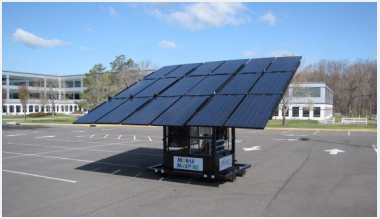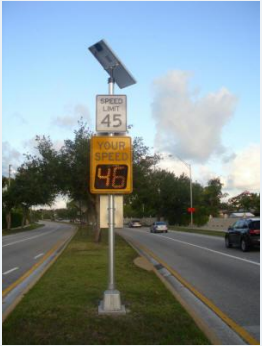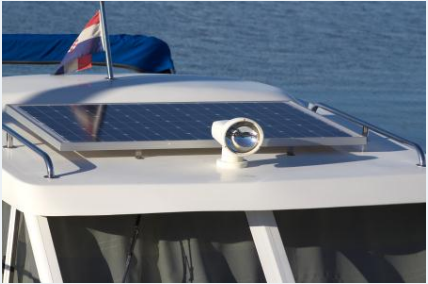Introduction – Why Solar?
Natural disasters such as hurricanes, tornados, floods, and powerful storms often occur with little warning, and can be as destructive as Hurricane Katrina (2005), Hurricane Irene (2011) or Hurricane Sandy (2012). Sandy left 8.5 million people across the East Coast without power, adding further challenges to disaster relief efforts such as providing medical support. Traffic controls, water purification, and hospitals are critical infrastructure systems during emergency situations and require backup electricity for continued operations.
A range of solar photovoltaic (PV) system applications are available and have the ability to meet critical power needs during emergency operations. If mobilized with technological solutions and policy change towards decentralized power generation, solar PV systems can offer a source of clean, flexible, reliable, pollution-free electrical power that can be used as on-grid systems during normal operations and as offgrid systems during emergencies or when the main grid connection is lost.
This brief provides a summary of solar PV applications for emergency planning, followed by an evaluation of criteria for choosing the right type of solar application for resilience. This brief concludes with examples of solar PV applications in municipal emergency and resilience planning in Boston (Massachusetts) and New York City (New York), followed by an introduction to various Florida Solar Energy Center initiatives (Florida).
Use and Applications
Solar PV systems can supply the electrical needs for a myriad of critical infrastructure systems. These systems can be grouped into five general types: backup power for emergency shelters, emergency lighting, communications, transportation, and small, portable systems for miscellaneous applications.
Backup power for emergency shelters – To sustain life and safety in emergencies, backup power for critical equipment should be available for a minimum of 3 days after a disaster has occurred. Certain infrastructure systems such as hospitals may need to have more than 3 days of backup power.
- Roof-top PV systems can be used to generate electricity for emergency shelters and to provide backup power to augment other energy sources. For instance, gas station canopies can support solar installations that, when combined with battery storage, can provide the electricity needed to operate fuel pumps during an interruption in grid power at any time of day.
- Solar-powered water pumps and purification systems can be applied to a well connected to groundwater source and purify water for emergency shelters’ critical water supply. For example, solar-powered water purifying pump unit, donated by World Water & Solar Technologies, Inc.,provided approximately 350,000 gallons of clean, potable water for hurricane victims in Wave land Mississippi for an 8-month period after Hurricane Katrina struck the Gulf Coast in 2005,3 as shown in Figure 1.
- In cases where an emergency shelter requires a significant up-front investment to be entirely supplied by a solar pv system, creating a hybrid system that combines solar with a diesel or propane generator can improve efficiency and provide short-term backup power for critical operations.

Emergency lighting is crucial for emergency operations, including streetlights and traffic lights, as well as for portable personal lights. Solar-powered streetlights can be configured to illuminate evacuation routes during power outages. Streetlights in Florida, consisting of a pole-mounted fixture that contained a battery and controller enclosure, two PV modules and a fluorescent lamp, were donated by a local company (Solar Outdoor Lighting) and survived major hurricanes including Hurricane Andrew in 1992 Solar-powered lighting can provide off-grid functionality to critical evacuation routes on highways and other roadways.
WiFi, communication repeaters and variable message boards can be used for roadside IP links, traffic management and other public communications. For instance, Florida Department of Transportation is equipped with solar-powered generator (See Figure 2),traffic devices, changeable message signs, flashing arrow boards, emergency road repair, and highway advisory radio.

Solar arrays and laminates (such as those found on the roof of the Toyota Prius) can be used to power electronic devices in emergency vehicles such as police, fire, or emergency medical service (EMS) vehicles (See Figure 3). For example, the Shawnee Fire Department in Kansas recently installed two solar panels, a charge controller, wiring and mounting parts on a fire truck to provide power for electronic devices.

Small portable systems
Portable solar generators enable a flexible and versatile use of solar energy, as they are generally small in size and easy to transport. Solar generators are available in a variety of configurations and energy potentials, which can be as small as 100 W and as large as 4 kW. For example, a California-based solar installer, Mobile Solar, donated mobilized solar generators that were outfitted battery storage to support water purification systems and construction tools for the tsunami relief effort in Fukushima, Japan.
Small PV systems packaged with batteries can accommodate the power needs for air monitoring and remote sensing applications.
Fold-out panels can support relatively small-scale emergency operations such as search and rescue, damage assessment, and GPS communications.
